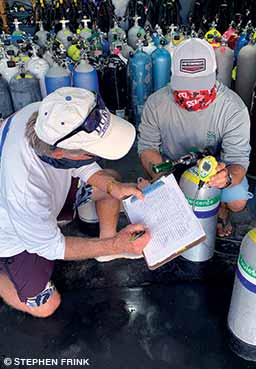The first step in ensuring the safety of staff, divers and the public is to develop a detailed awareness of the real risks present in all operations performed by dive businesses and professionals. Identifying hazards and assessing risks allow you to take practical and achievable mitigating steps. This preparedness leads to preventing accidents and injuries effectively and sustainably.

DAN® has produced a brief guide for anyone responsible for safety. The guide offers an introduction to identifying and understanding 17 of the most common areas of concern. These potential incident sources highlight the kinds of considerations that need attention and help operators to better understand how they might apply this knowledge to their businesses.
The following essential aspects could apply to many dive businesses:
- customer health and safety, including the need for proper screening and when to decline a customer’s request to go diving
- travel and health advice, which is especially relevant for travel to remote and undeveloped regions
- staff health, safety and training, such as taking care of staff and ensuring that they are fully equipped to manage clients’ safety
- classrooms, retail shops and confined-water training sites as areas of concern that may not be obvious
- boats and other vehicles, which have safety requirements and may also provide accommodations or adjustments for customers, staff or dive site access

- rental equipment and equipment workshops, for which operators need to ensure that all dive equipment remains functional and reliable
- clean breathing-gas production, including safe handling of high-pressure equipment, filling dive cylinders and protecting divers’ health
- accident preparedness, especially for those occurring in uncommon or unexpected locations or involving hazards that exist outside of typical dive settings
- emergency action planning for dives and dive-support activities, which is essential for managing situations and limiting harm and damage as much as possible
These safety tips, which have been published individually in a range of publications, are now available in a single booklet at DAN.org/safety-prevention/operation-safety.
© Alert Diver — Q2 2021